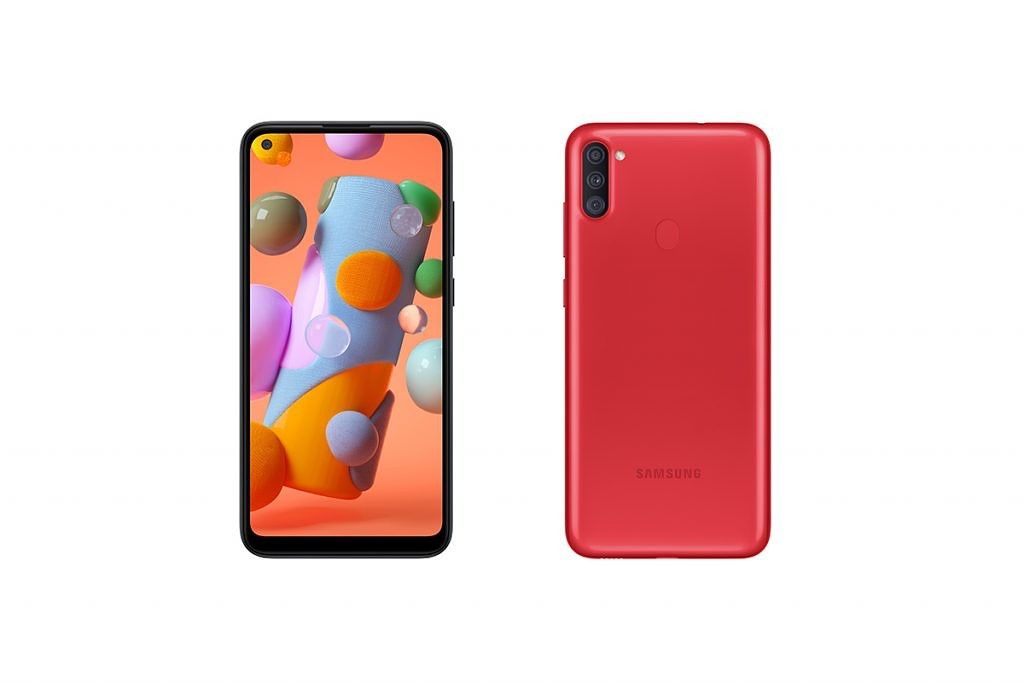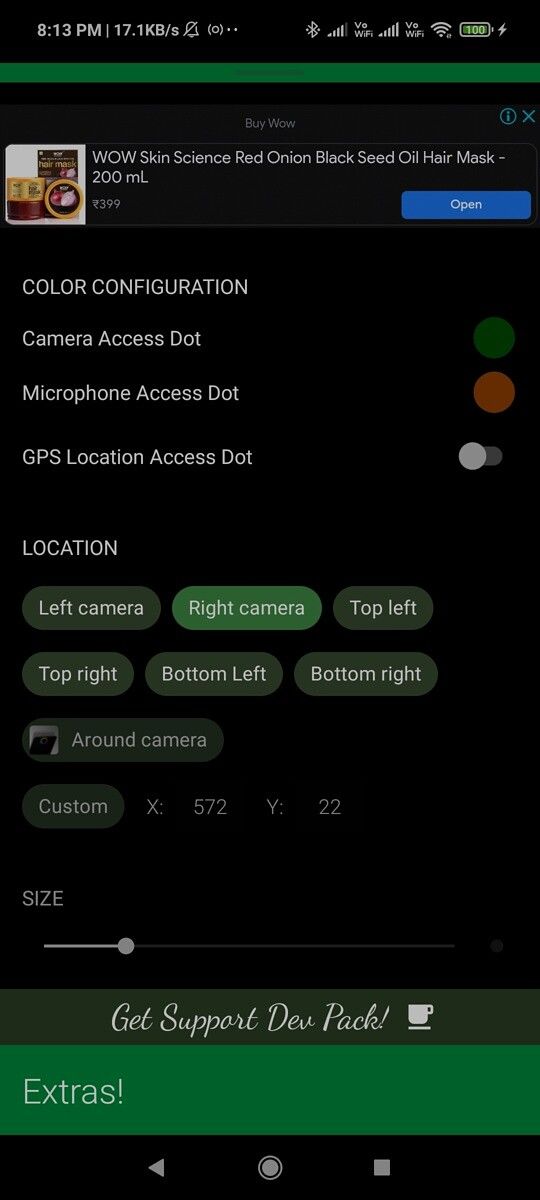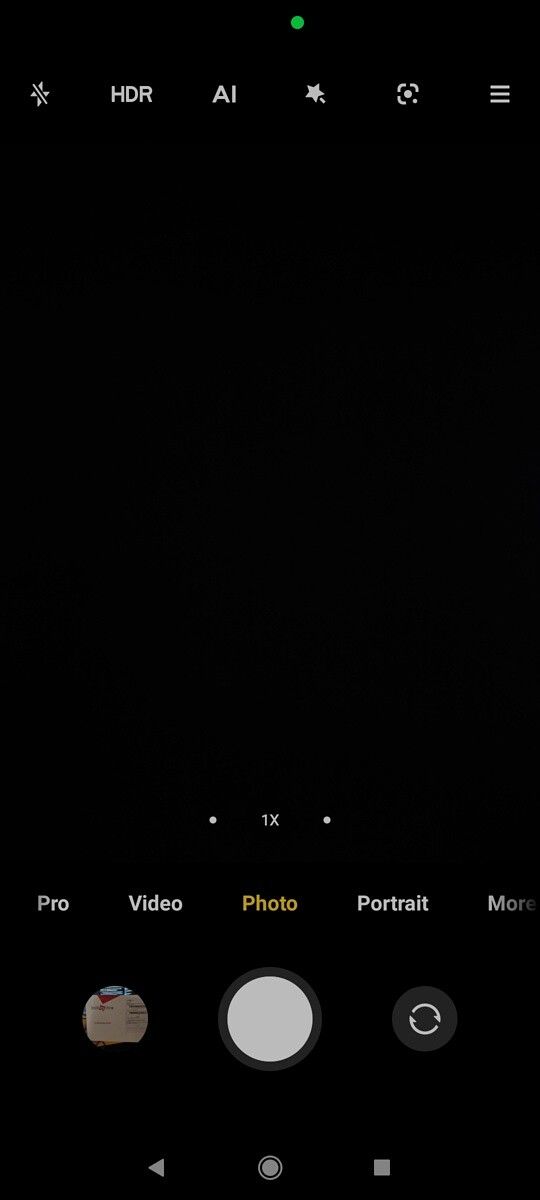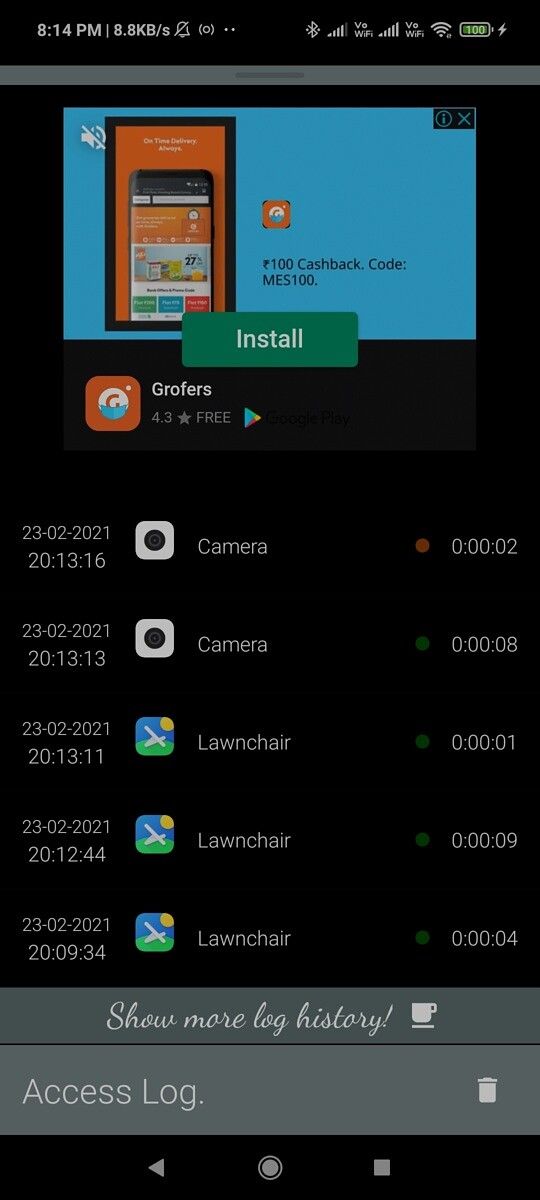There’s no getting around this: carrier compatibility can make your choice of a phone harder if you’re in the U.S. Often, you’re forced to buy your phone directly through a carrier or jump through hoops to activate it on your carrier, which can introduce several complicated variants. If you import a phone from overseas, it can be quite crippled in the U.S. And AT&T is arguably one of the biggest carriers in the U.S, but also one of the most annoying ones when it comes to getting their phones to work. Luckily, though, if you’re an AT&T customer, the company has a lot of options available for you to check out. We’ve compiled a list of some of the best AT&T phones you can get today.
From high-end devices trickling all the way down to budget phones, you can rest assured that there’s an option for you. To ensure carrier compatibility issues are out of the gate, we’ve focused our list on smartphones you can get directly from AT&T themselves, rather than devices you can bring in to AT&T, as compatibility for those devices can get a bit hit-or-miss. Most of these will also have support for AT&T’s 5G network. If you are on Verizon, you can check out our list of best Verizon phones.
Navigate this guide:
Best Overall: Samsung Galaxy S21 Ultra 5G

The Galaxy S21 Ultra 5G is an amazing phone that fixes most, if not all, of the flaws that plagued the Galaxy S20 Ultra—Samsung’s first attempt at bringing an “ultra” experience to the S series. The Galaxy S21 Ultra keeps the 108MP camera but does everything around it much better, the display is worthy of praise, and while it does away with things such as the SD card slot, the end result is a smartphone that brings together the best of the S series with the best of the Note series. Heck, you can even get an S Pen with your Galaxy S21 Ultra if you really want to.
It’s one of the best Android phones of the year, period, and it’s evidently one of the best AT&T phones you can get right now.
The Samsung Galaxy S21 Ultra 5G is Samsung's current absolute best and most powerful, with a 120Hz QHD panel, a Snapdragon 888 processor, and an amazing 108 MP camera with an enhanced Space Zoom feature.
Runner-Up: Apple iPhone 12 Pro Max

Just like how the Galaxy S21 Ultra is Samsung’s best so far, the iPhone 12 Pro Max shows why Apple has the stronghold they currently have in the U.S, even as Android manufacturers actively try to gain foot there. It’s an amazing device in every sense, refining on the iPhone 11 lineup and improving on things such as the camera, the overall build quality, and premium feel, and of course, everything that makes an iPhone actually an iPhone. A big 6.7-inch display is in tow as well as a triple rear camera with a LiDAR sensor and an amazing Apple A14 SoC based on a 5nm process.
Everything about this device screams expensive and premium, which is why it’s a very close runner-up to the best AT&T phone out there. Oh, and it’s also one of the first iPhones with support for 5G, in case that’s something you’re interested in.
The iPhone 12 Pro Max is Apple's best so far, bringing a bold battery, bold cameras with an all-new LiDAR sensor, an Apple A14 SoC, and more. It's as good as iOS gets right now.
Best for Most People: Samsung Galaxy S21 5G

This category was a close one for me, but I eventually settled in giving it to the Galaxy S21 5G. Why’s that, I might hear you say? Well, it’s because the Galaxy S21 smartphones are really great, and this is no exception, packing the latest Snapdragon 888 CPU, amazing cameras, an amazing display, and much more. I won’t bore you with the specs, you already know most of them. The thing that makes this phone, in particular, a great buy is the fact that, just like its bigger brothers, the Galaxy S21 got a price cut across the board compared to the Galaxy S20: while the Galaxy S20 would set you back $999 at launch, the Galaxy S21 is available for $799 right now.
At $1000 it was a passable flagship. At $800? It becomes pretty good. It’s the same kind of strategy that worked in the S20 FE’s favor, and I’m glad to see it here too. It’s one of the best AT&T phones currently available.
The Samsung Galaxy S21 5G is the S21 for the average person. It doesn't pack as nearly as many features as the S21 Ultra does, but it makes up for it by being a good flagship in a better-than-average price point.
Best Compact: Apple iPhone 12 Mini

Compact devices have been uncharted territory for a lot of Android manufacturers in the past few years, but Apple pulled a new trick out of their hat this year. While Android phones keep getting bigger, Apple took a U-turn on that trend and launched the iPhone 12 Mini, which is probably the smallest phone I’ve seen in a solid amount of years. It has a 5.4-inch display and considering that the display is still the typical 19.5:9 Apple has been doing since 2017, this means that we have a phone that is absolutely tiny: it’s smaller than the new iPhone SE, and it’s actually just slightly bigger than the iPhone 5/5S. And that phone had a 4-inch display. Despite this, it still manages to retain the high-end features in the other iPhones, including the A14 processor and the camera.
It really can’t be understated how small this phone is, and if you’ve been waiting for something like that, then go ahead and grab it from AT&T, as it’s sure one of the best AT&T phones currently available.
The iPhone 12 Mini is Apple's smallest phones to date, but don't let that tiny size fool you: it's just as powerful as the other phones in the iPhone 12 series. It comes with the same Apple A14 processor and the same cameras, despite only having a tiny 5.4-inch display.
Best Bleeding Edge: Samsung Galaxy Z Fold 2

The Samsung Galaxy Z Fold 2 is the definition of throwing everything but the kitchen sink, smartphone edition. The original Galaxy Fold was a demonstration of this, as it was Samsung’s first foldable smartphone and a peek at what they called the “future” of smartphones. That phone, though, had several issues and rougher edges that are common with a first-generation product. The Galaxy Z Fold 2? Not so much. It’s much more refined, with the same “ultra-thin” glass featured in the Galaxy Z Flip, and improving on things such as the hinge, the displays, the battery, the camera, and much, much more. It’s still not perfect, but it’s clearly getting there.
If you’ve been sitting on a foldable smartphone and have been waiting for them to become better, then the Galaxy Z Fold2 is one of the best AT&T phones you should be checking out today.
The Galaxy Z Fold2 is the second generation of foldable smartphones from Samsung and serves as a more closer look on how foldable phones might look like in the future. While the Galaxy Fold functioned more like a first-gen product, the Z Fold2 comes much closer to realizing Samsung's foldable aspirations.
Best Mid-Range (with 5G): Google Pixel 4a 5G

The Google Pixel 4a 5G might be worth an even bigger look than the Google Pixel 5 if you don’t really care about things such as having a high refresh rate display. This is because the Pixel 4a 5G actually shares a lot more DNA with the Pixel 5 than with its smaller cousin, the Google Pixel 4a. The Pixel 4a 5G brings 90% of what the Pixel 5 is to a cheaper package: it has the same Snapdragon 765G SoC, the same cameras, and a lot of stuff remains the same too. It’s also bigger than both the Pixel 5 and the Pixel 4a, which is also good news if you’re a fan of bigger phones. Of course, it also has full support for AT&T’s up-and-coming 5G network.
If you’re in the market for the best AT&T phone that doesn’t break the bank and comes with 5G support, the Pixel 4a 5G might just be the option for you.
The Google Pixel 4a 5G is a down-step from the Google Pixel 5, although you're still getting the same horsepower and most of the features that are included with the higher-end model, despite the fact that this is branded as a Pixel 4a instead of as a Pixel 5.
Best Mid-Range: Apple iPhone SE (2020)

The iPhone SE is a rare incursion of Apple into the mid-range market. But it’s a weird one at that. In many ways it feels more of a “flagship killer” as it was pioneered by OnePlus back in the day: the iPhone SE comes with the very same SoC that powers the iPhone 11 lineup, the Apple A13. That means you’re getting the same performance as Apple’s last-gen flagship. But it also has the same form factor as the iPhone 8, which can probably feel very dated to this day, with thick bezels and an HD display. Don’t get me wrong, though: it’s an iPhone 8 with the internals of an iPhone 11, which is awesome, and it’s sure one of the best, if not the best, options within its price point.
It’s one of the best AT&T phones even though it’s hardly the best in Apple’s lineup, and the few sacrifices it makes are really hard to scoff at. Check it out!
The second-generation iPhone SE comes packed with quite a lot of phone despite what the retro bezels and home button might suggest. It's essentially an iPhone 11 in an iPhone 8's body, rocking the same Apple A13 SoC. And we're here for it.
Best Budget: Galaxy A11

Samsung makes amazing phones both in the high end and the low end of the market, and the Galaxy A11 is a testament to what they can do in the low end. The Galaxy A11 is hardly a lackluster device, and the Snapdragon 450 that powers it is not the most performant CPU out of the bunch, or maybe even out of its price point. But it makes up for it by providing the same Samsung experience and One UI software that comes with the high-end devices and brings it to the low end of the spectrum through One UI Core. The result is a device that looks pretty good for its price point with a modern-looking hole-punch display, a triple rear 13MP camera, 64GB of storage, and a beafy 4,500 mAh battery.
If you’re looking for something that will do the job on a tight budget, this is one of the best AT&T phones you should be considering.
The Galaxy A11 isn't a high-end phone, and it doesn't try to be one. And that's the magic of it. If you need a phone that does the job and you're on a really tight budget, then the Galaxy A11 should fit your bill pretty well.
Best Unique: LG Wing

LG had a pretty weird 2020. The LG Velvet was proof of that. The LG Wing, though… This definitely earns the “unique” award by quite a long shot. LG is no stranger to trying out new and weird things: we just need to have a look at the LG G5’s weird module system, the LG G8’s “hand scanning” mechanism, and a lot of other gimmicks that the company has pioneered and that have then flopped with varying degrees of failure. The latest one in that list is the LG Wing, which features a display that slides to a horizontal orientation to then reveal a smaller, square-shaped display under it, effectively sliding out like a “wing”. While I think it’s a gimmick that won’t be back next year, I still think it’s pretty cool, so my respects to LG on that.
And if you want to check out yourself, it’s also one of the best AT&T phones available, with full support for 5G thanks to the Snapdragon 765G processor in tow.
The LG Wing does pretty well what LG has learned to do through the years: being unique and standing out. With a display that slides out horizontally, you're definitely gonna be standing out. And the Snapdragon 765G and other specs should serve you pretty well, too.
Honorable Mention: Galaxy A51 5G

The Galaxy A51 5G was one of the best mid-range smartphones Samsung put out through the year, and I still think it deserves a mention if you’re looking for a Samsung midrange that supports 5G and comes with all the Samsung goodies that you’d expect. The Galaxy A51 5G comes with the Exynos 980 SoC, a decently-performing mid-range processor, and comes in with up to 8 GB of RAM and 128 GB of storage, so it should be able to shred most tasks you throw at it. While the Pixel 4a 5G in the same price bracket steals some of this phone’s shine, it still has its charm, even heading into 2021 when it will eventually be replaced by a looming Galaxy A52.
It’s one of the best AT&T phones available out there if you’re looking into midrange options. Oh, and it’s also $1/mo through AT&T right now, so it’s an amazing bargain you should look at if you’re tied to AT&T.
The Galaxy A51 5G was Samsung's best offering in the middle range through 2020, featuring an Exynos 980 SoC, up to 8 GB of RAM, 128 GB of storage, and a 48MP camera, as well as, of course, 5G support.
This pretty much sums up our list of the best AT&T phones currently available. At the top of the line, we have options from Samsung and Apple that are worth considering if you’re looking into phones that look and feel premium and high-end, such as the Galaxy Z Fold 2, the Galaxy Note 20 Ultra, and the iPhone 12 Pro Max. Then, we have options trickling down to everything from compact phones (iPhone 12 Mini) all the way to ruthlessly cheap devices (Galaxy A11). All of these phones can be acquired directly through AT&T and can be paid in monthly installments, trade-in, and more. Check out the respective listings for more specific terms and conditions.
Are you an AT&T user? Are you planning on getting any of these phones?
The post These are the best AT&T phones you can buy in February 2021! appeared first on xda-developers.
from xda-developers https://ift.tt/34ZYnL8
via
IFTTT


























